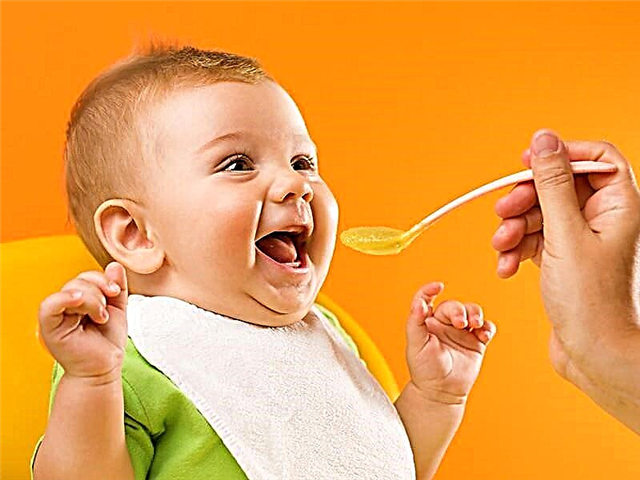
In adolescence, growth processes are activated in the child's body. During this period of life, significant changes occur in the work of the body, especially in the hormonal and emotional spheres. This is why it is so important for your teen to get enough calories and nutrients from their diet.
You can use the calculator to calculate your teen's weight and height norms. The calculator is based on the standards for height and weight from the World Health Organization (WHO).
Healthy eating principles
- Meals should be regular, so it is important to organize a meal plan that your teen will follow every day.
- The teenager's menu should be as diverse as possible so that the child receives both non-essential and essential nutrients in the right amount.
- At least 50-60% of proteins in the daily diet of a teenager should be represented by animal products.
- A teenager should receive fats from vegetable oil, sour cream, nuts, cheese, butter and other products. It is desirable that about 70% of all fat consumed per day be vegetable.
- The child should receive more carbohydrates than other nutrients. The optimal ratio of carbohydrates to proteins is 4 to 1.
- Sources of fast carbohydrates (sugary foods) should account for up to 20% of all carbohydrates consumed by a teenager.
- The child will receive complex carbohydrates from cereals, potato dishes, bread. For the preparation of flour dishes, it is recommended to give preference to coarse flour.
- Fish should be on the teen's menu at least 1-2 times a week. The same recommendations are given for red meat.
- Your teen should eat 5 servings of fruits and vegetables every day. One serving is a medium-sized fruit (such as an apple or orange), two small fruits (such as an apricot), 50 g of vegetable salad, a glass of freshly squeezed juice, three tablespoons of vegetables after cooking.
- Dairy products should be on the teen's menu every day in the form of three servings.
- A child can eat fatty and sweet foods in small quantities, but such meals should not replace healthy foods, as they contain too few healthy elements.
- The best types of heat treatment of food are called boiling and stewing, as well as baking.
- In the diet of adolescents, foods with food additives, margarines, store sauces, off-season vegetables, raw smoked sausages, very spicy dishes, deep-fried foods, packaged juices, lollipops, fast food, chewing gum are undesirable. It is also worth limiting the consumption of white bread and sugar.


Teenage food needs
Your teenager should be getting adequate calories to cover his energy needs throughout the day. On average, this is 65 kcal per kilogram of the child's weight, which in general is about 2500-3000 kcal per day.
If the teenager's physical activity is high, the daily amount of calories should be increased in accordance with the expenditure of energy in training.
In terms of nutrients, adolescent children are advised to consume 100-110 g of protein, 90-100 g of fat and an average of 400 g of carbohydrates daily.
What foods should be included in the diet?
The teen's food needs per day will be as follows:
- Meat - about 200 grams;
- Cottage cheese - 60 grams;
- Dairy products - about 500 ml;
- 1 egg;
- Cheese - about 10-15 grams daily;
- Fish - 60 to 70 grams;
- Sweets - up to 100 grams;
- Bread - from 300 to 400 grams (including rye bread in an amount up to 150 grams);
- Pasta or cereals - about 60 grams (once a week, replace legumes in the same amount);
- Vegetables - 300-350 grams;
- Fresh fruits - from 150 to 300 grams;
- Dried fruits - about 25 grams;
- Butter - from 30 to 40 grams;
- Vegetable oil - 15 to 20 grams.
Read about vitamins for teenagers in another article. You will learn about whether you need to introduce additional vitamin complexes into the diet and what you should pay attention to at this age.
What you should pay attention to when drawing up a menu for a teenager, see the video of the Union of Pediatricians of Russia.
How to teach a child to eat healthy?
Nutrition in adolescence is both complex and simple. Parents are still able to influence the menu of their son or daughter, but the child's food preferences in general are already formed. Plus, the desire to be independent and to do it your way affects nutrition. It is important to find a balance between food control and personal violence.
In introducing a teenager to healthy eating, the example of parents is important. It is advisable that the whole family follows the principles of good nutrition. Talk to your child about the benefits of specific foods and the importance of certain foods for growth and health. Teach your teen about the importance of breakfast, the bad effects of fast food, skipping meals, and starving diets.
Be sure to pay attention to your child's nutrition at school. Encourage your teen to take healthy alternatives to hot dogs and pizza from home. For example, let your son or daughter take yoghurts, fruits, casseroles, and homemade cakes to class.

Diet
Teenagers should eat at least 4 times a day. All meals are divided into:
- Breakfast. In the morning meal, your child should receive about 25% of all calories.
- Dinner. This is the largest meal of the day, accounting for 35 to 40% of your daily calories.
- Afternoon snack. It is represented by a small snack, corresponding to about 15% of the calorie content of the daily.
- Dinner. In the evening meal, the child is advised to eat 20 to 25% of the daily calories. At the same time, it is important that the teenager has dinner a maximum of 2 hours before the moment he goes to bed.
What fluids to give?
The total amount of fluid consumed by a teenager per day will be determined by the characteristics of the child's menu, the level of activity of the teenager, as well as the weather. On a hot day or during physical activity, you should consume more water. On average, a teenager needs about 50 ml of fluid every day for every kilogram of his weight.
The best drink for a teenager is plain water. Also, the diet of school-age children may contain such drinks as milk, compotes, jelly, rosehip infusion, dried fruit decoction, tea, cocoa.
Juice is considered a less preferred drink due to its high content of simple sugars and increased acidity. If a child drinks freshly squeezed juice, then it should certainly be diluted with water.
Teens should avoid sodas and drinks high in caffeine. Caffeine interferes with iron absorption and can cause sleep problems. Sparkling drinks are poor thirst quenchers and irritating to the digestive tract, and often contain various chemical additives.

How to compose a menu?
In compiling a menu for a teenager for a day, one should take into account the child's day regimen, in particular, the mode of attending school, sports sections, tutors and other activities.
It is better to make a menu for the whole week at once, then it will turn out to be more varied and nutritious. Consider these nuances:
- For breakfast, a teenager should receive an average of 300 g of the main course, as well as a drink with a volume of about 200 ml. Milk porridge, cottage cheese dishes, scrambled eggs or scrambled eggs are considered good breakfast options. Vegetables, dried fruits, berries, fruits, meat, sauces are added to them.
- Many teenagers eat lunch at school, receiving soup, a second course (usually a side dish and meat or fish), and a drink. The homemade lunch menu follows the same principle. The child is given about 250 ml of the first course and about 100 g of vegetable salad. The main dish is offered to a teenager in a volume of up to 300 grams, and a drink in a volume of 200 ml.
- For an afternoon snack, a teenager is recommended to eat dairy products, fruits, pastries and cookies. Approximate dish sizes are 100 g for baked goods, 100 g for fruits and 150-200 ml for drinks.
- At the evening meal, the adolescent child is offered a main course (about 300 g) and a drink (200 ml). Low-fat protein meals, such as cottage cheese casserole, egg dishes, or fish dishes, are good choices. Porridge and vegetable dishes are also a good option for teenagers' dinners.
- Bread can be included in any meal by offering your child baked goods made from different types of flour.

Sample menu
An example daily menu for a teenager might look like this:
- Oat milk porridge with dried apricots, bread with cheese, cocoa.
- Egg, tomato and cucumber salad, broth with noodles, stewed cabbage, beef meatballs, grape juice, bread.
- Curd biscuits, apple, milk.
- Potato casserole with meat, rosehip infusion, bread.
The second menu option for a day for a child 12-17 years old:
- Cottage cheese casserole with sour cream sauce, bread and butter, tea.
- Carrot and cabbage salad, borscht, mashed potatoes, baked rabbit, dried fruit compote, bread.
- Butter bun, orange, kefir.
- Pea omelet, cheese sandwich, chicory.
Another option for a day's menu for a teenager:
- Omelet with tomatoes and cheese, rye bread, tea with honey.
- Zucchini caviar, vegetable soup with sour cream, buckwheat porridge, stewed liver, apple jelly, bread.
- Oatmeal cookies, baked apple, fermented baked milk.
- Pancakes with cottage cheese and raisins, cocoa, bread.

Possible problems
If parents are not interested in the child's nutrition, due to the monotonous and nutrient-poor menu, the teenager may have the following problems:
- Obesity.
- Brittle bones.
- Fast fatiguability.
- Reduced immunity.
- Diseases of the joints.
- Dizziness and low blood pressure.
- Menstrual problems in girls.
- Caries.
- Exhaustion.
Excess weight
If the BMI of a teenager exceeds 25-30, you should pay attention to nutrition and correct it. First of all, harmful products are excluded from the child's menu (chips, chocolate bars, fried foods, fast food, sausages, mayonnaise and others), reduce the total amount of food by 10-20% and add physical activity to the daily routine.

Prepare homemade food for your child, focusing on baked, stewed or boiled meals. Let the child eat vegetable soups, cereals, low-fat dairy products, chicken, lean meat, fish, eggs, and seafood. You don't need to give up potatoes, bread or pasta, and sweets. Let such products be present in the menu in small quantities 1-2 times a week.
In terms of physical activity, any sport that the teenager likes is recommended. You need to do at least 2-3 times a week for 1-2 hours.
Anorexia
Teens are often dissatisfied with their appearance and may choose the wrong diet path with large restrictions. The result will be hypovitaminosis, delayed puberty and anorexia.
You can suspect such problems in a teenager by a sharp decrease in weight, constant weakness and fatigue, mood swings and irritability, frequent refusal to eat together, disappearance after a feast (to induce vomiting), problems with the menstrual cycle, sleep disturbances.

In such cases, parents should pay more attention to the child's menu and conversations with him. Many adolescents in this condition require the help of specialists.
Video of the channel "TGym - A bright path to excellence!" will be very useful for every teenager.



